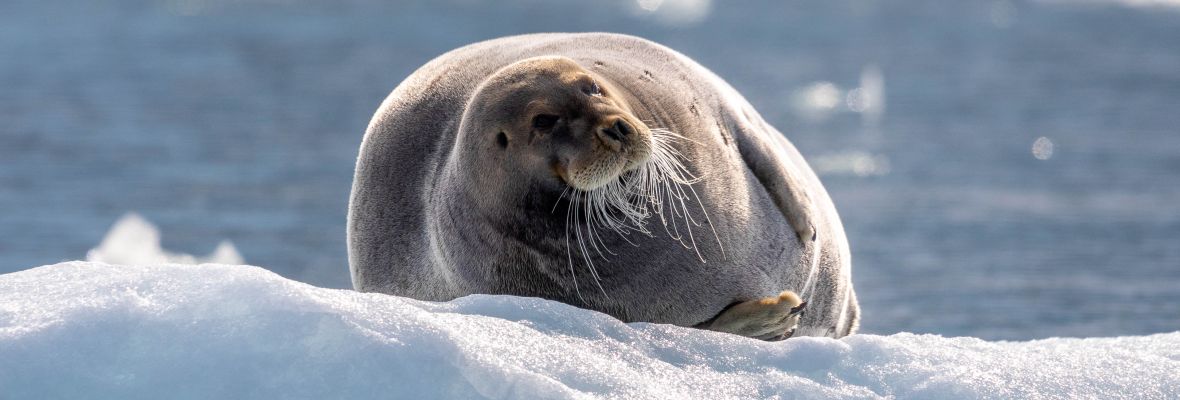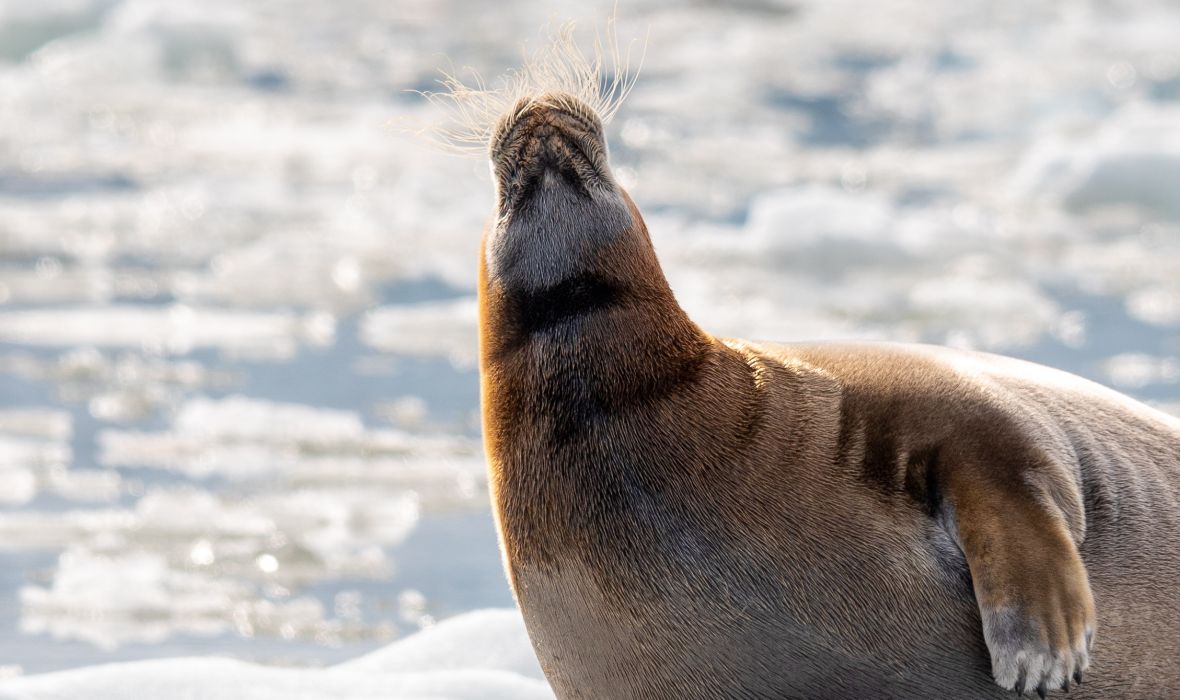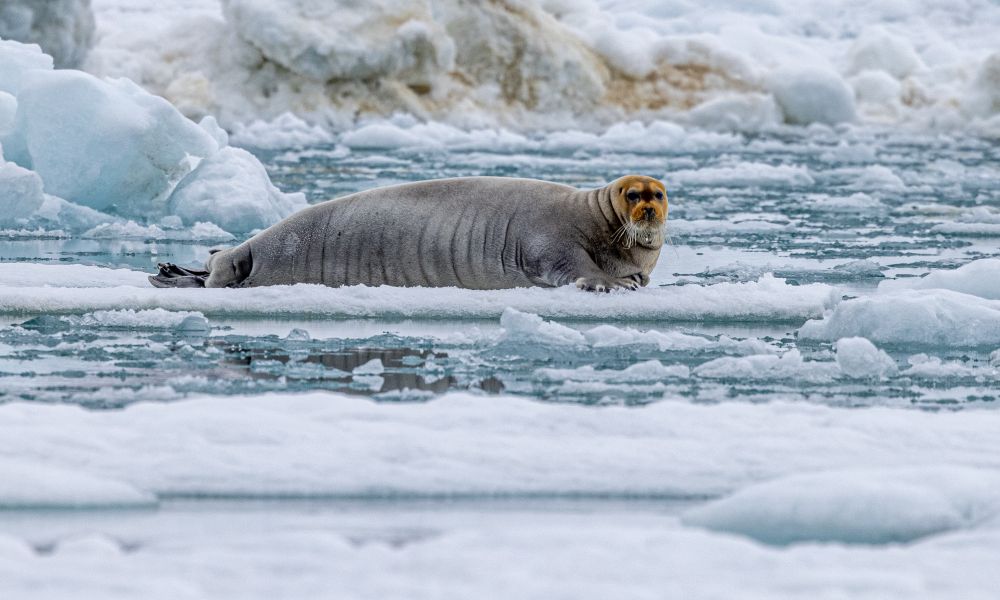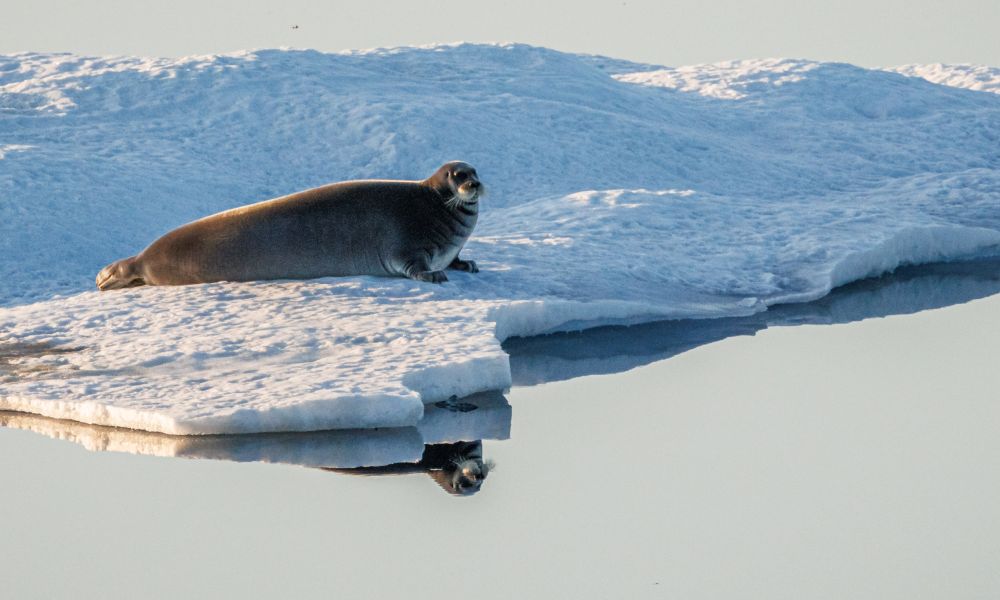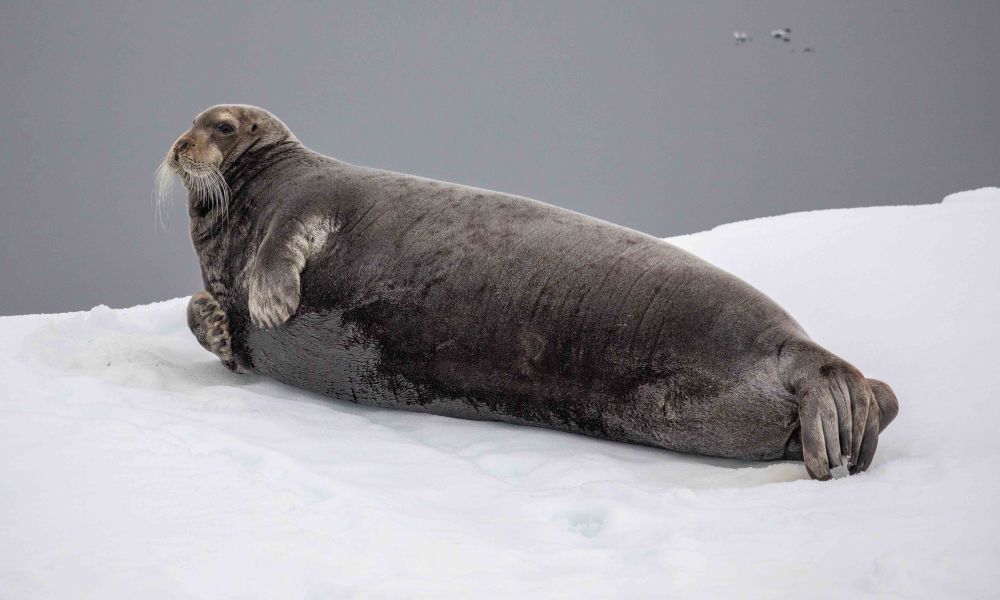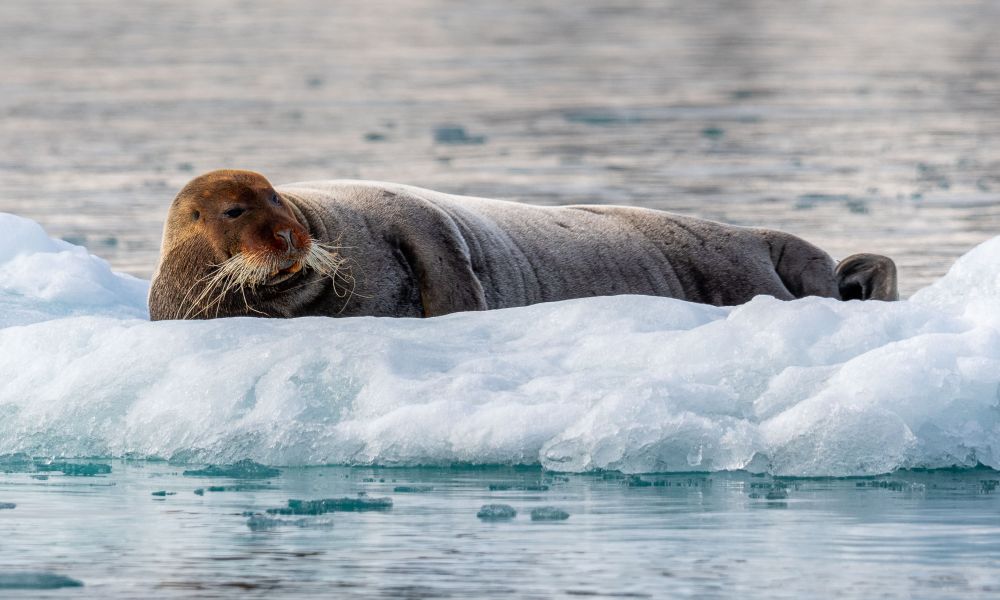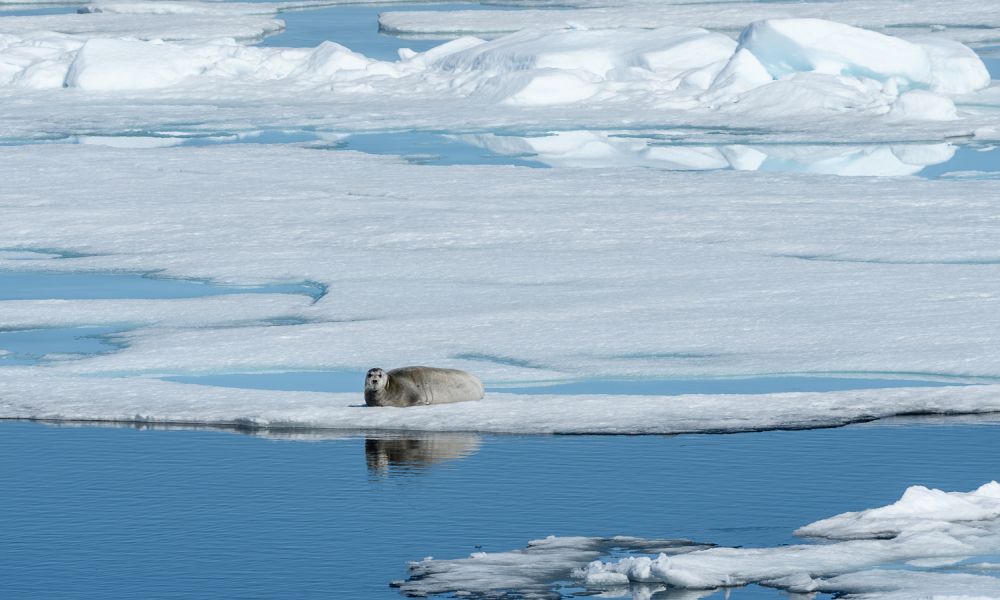How Big is a Bearded Seal?
Bearded seals are the largest of the northern phocid seals. Adults measure between 2 and 2.5 metres in length, and their weight varies dramatically throughout the year, with an average weight of 250 to 300 kg. Unusually for seals in the Arctic, females are the largest and can weigh over 425 kg in spring. At birth, pups are approximately 1.3 metres long and weigh around 33 kg.
Who are the Bearded Seals predators?
Bearded seals face predation from polar bears while resting on the ice, and orcas (killer whales) are also predators in the open water seas.
What Do Bearded Seals Eat?
Bearded seals are omnivorous, similar to walruses. Their diet consists mainly of benthic prey, which includes organisms that live on the seafloor. They feed on mussels, shrimp, crabs, cod, and flatfish, using their sensitive whiskers to detect food.
How Do Bearded Seal Adaptations Help Them Survive in the Arctic?
Bearded seals have several distinctive physical features: their bodies are very rectangular in shape; their heads seem small in comparison to their body size; they feature square-shaped front flippers with the longest toe being the middle one and powerful claws; and they have an extremely elaborate, long set of whiskers that tend to curl when dry. These whiskers (or vibrissae) give the species its name. Their thick blubber provides insulation against freezing temperatures, while their robust claws allow them to break through ice to create breathing holes. Their long whiskers are highly sensitive, helping them locate prey in the dark Arctic waters.
Where Do Bearded Seals Live?
The bearded seal's habitat extends across the Arctic Ocean, including Greenland, Svalbard, Alaska, Canada, and Russia.
What purpose do seals' whiskers serve?
The nose of a bearded seal has a sensory function thanks to its highly sensitive tactile hairs, which assist in sensing environmental changes. These whiskers can detect the vibrations and movements of prey in dark waters. Additionally, they play a crucial role in prey detection, especially since bearded seals experience very poor visual conditions.



